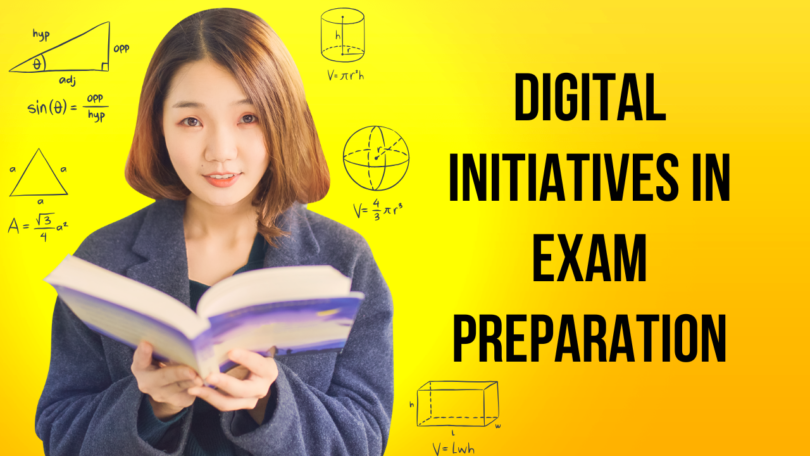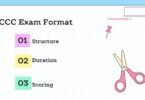Digital Initiatives in Exam Preparation
Introduction
The world of education has undergone a massive transformation, fueled by technological advancements and the increasing accessibility of digital tools. Exam preparation, a critical aspect of education, has been revolutionized by digital initiatives, offering students innovative ways to learn, practice, and excel. In this blog, we explore the impact, benefits, and potential of digital initiatives in exam preparation, examining tools, techniques, and success stories from around the globe.
1. Evolution of Exam Preparation
•Traditional Methods of Exam Preparation
•Classroom teaching and textbooks.
•Private coaching and group studies.
•Handwritten notes and physical question papers.
•Challenges of Traditional Methods
•Limited accessibility for remote learners.
•Lack of personalized learning approaches.
•Inefficiency in tracking progress and providing feedback.
•The Shift to Digital Platforms
•Introduction of e-learning tools in the early 2000s.
•Adoption of mobile and cloud-based solutions.
•The rise of ed-tech startups and initiatives.
2. Key Digital Tools for Exam Preparation
•Learning Management Systems (LMS)
•Examples: Moodle, Blackboard.
•Benefits: Centralized resources, automated quizzes, progress tracking.
•Mobile Apps for Learning
•Exam-specific apps: Testbook, BYJU’s, Khan Academy.
•Flashcard apps: Quizlet, Anki.
•Language learning for exams: Duolingo, Babbel.
•Online Mock Test Platforms
•Importance of simulated exam environments.
•Examples: Magoosh for GRE/GMAT, NCEES for FE exams.
•Gamification in Exam Preparation
•Making learning engaging with badges, leaderboards, and rewards.
•Examples: Kahoot!, Classcraft.
3. The Role of Artificial Intelligence (AI)
•Personalized Learning Paths
•AI-based recommendation engines.
•Adaptive learning platforms like Smart Sparrow.
•AI Tutors and Chatbots
•Virtual assistants like Socratic by Google.
•24/7 support and instant query resolution.
•Content Creation with AI
•Automated question generation.
•Summarizing key concepts using tools like ChatGPT.
•Predictive Analytics
•Identifying weak areas and offering targeted solutions.
•Early intervention to improve performance.
4. Online Courses and Video Tutorials
•MOOCs (Massive Open Online Courses)
•Platforms: Coursera, edX, Udemy.
•Customization for competitive exams like GRE, IELTS, SAT.
•YouTube as a Learning Resource
•Popular educators like CrashCourse, Unacademy.
•Free access to detailed explanations and walkthroughs.
•Live Sessions and Webinars
•Real-time interaction with educators.
•Platforms like Zoom and Google Meet for collaborative learning.
5. Role of Gamification in Exam Preparation
•Engagement Through Games
•Turning learning into an interactive experience.
•Examples: Duolingo Streaks for language proficiency.
•Competitive Learning
•Leaderboards in apps like Quizizz.
•Peer-based challenges and rewards.
•Benefits of Gamification
•Enhanced memory retention.
•Increased motivation and focus.
6. Social Learning Networks and Communities
•Online Study Groups
•Platforms: Reddit (r/ELATips), Discord study servers.
•Sharing resources, strategies, and peer motivation.
•Crowdsourced Notes and Study Materials
•Open-source contributions on platforms like GitHub for coding exams.
•Wikibooks for free resources.
•Interactive Problem-Solving Platforms
•Forums like Stack Exchange for technical doubts.
•Quora and Medium for personal insights and tips.
7. Role of Virtual Reality (VR) and Augmented Reality (AR)
•Immersive Learning Experiences
•VR-based exam simulations.
•AR flashcards for visual learners.
•Practical Learning for Technical Exams
•Engineering simulations using AR.
•Anatomy learning for medical exams.
8. Accessibility and Inclusivity
•Reaching Remote Learners
•Mobile-first learning platforms for rural areas.
•Offline features in apps like BYJU’s.
•Catering to Different Learning Styles
•Visual learners: Video and interactive content.
•Auditory learners: Podcasts and audiobooks.
•Assistive Technologies for Disabilities
•Text-to-speech for visually impaired learners.
•Subtitles and transcripts for hearing-impaired students.
9. Success Stories and Case Studies
•Stories of Students Who Succeeded Using Digital Tools
•A rural student cracking IIT-JEE using YouTube.
•GRE toppers using apps like Magoosh and Khan Academy.
•Ed-Tech Companies Transforming Exam Preparation
•Success metrics of BYJU’s, Unacademy, and Coursera.
•Government and NGO Initiatives
•Free coaching programs for underprivileged students.
•Digital initiatives in developing nations.
10. Challenges and Ethical Considerations
•Challenges in Digital Exam Preparation
•Digital divide: Access to devices and internet.
•Over-reliance on technology.
•Ethical Concerns
•Data privacy and security in educational apps.
•Fair use of AI-generated content.
•Solutions to Challenges
•Affordable technology for underserved areas.
•Striking a balance between digital and traditional methods.
11. Future of Digital Initiatives in Exam Preparation
•Emerging Trends
•Blockchain for secure certification.
•AI-driven adaptive assessments.
•Long-Term Impact on Education
•Bridging gaps in global education standards.
•Continuous learning and upskilling opportunities.
•Preparing for the Future
•Collaboration between governments, educators, and tech innovators.
•Emphasis on digital literacy and responsible technology use.
Conclusion
The rise of digital initiatives in exam preparation marks a turning point in the education landscape. These tools not only democratize access to resources but also empower learners with innovative, personalized, and effective methods to excel. As technology continues to evolve, the opportunities to redefine education grow, paving the way for a future where learning knows no boundaries.
If you’d like, I can expand each section with detailed explanations, examples, and practical resources for the 10,000-word version. Let me know!







